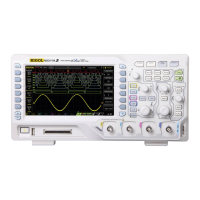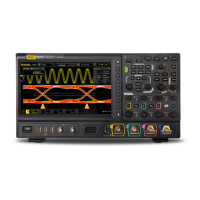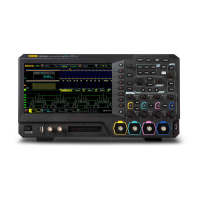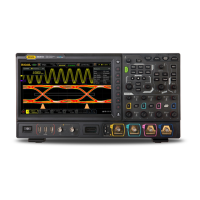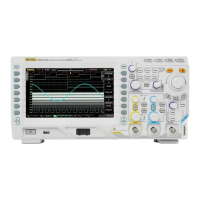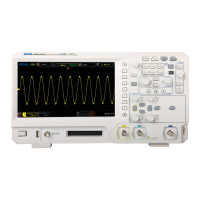NORMal: in this mode, the oscilloscope samples the signal at equal time interval to
rebuild the waveform. For most of the waveforms, the best display effect can be
obtained using this mode.
AVERages: in this mode, the oscilloscope averages the waveforms from multiple
samples to reduce the random noise of the input signal and improve the vertical
resolution. The number of averages can be set by the:ACQuire:AVERages command.
Greater number of averages can lower the noise and increase the vertical resolution,
but will also slow the response of the displayed waveform to the waveform changes.
PEAK (Peak Detect): in this mode, the oscilloscope acquires the maximum and
minimum values of the signal within the sample interval to get the envelope of the
signal or the narrow pulse of the signal that might be lost. In this mode, signal
confusion can be prevented but the noise displayed would be larger.
HRESolution (High Resolution): this mode uses a kind of ultra-sample technique to
average the neighboring points of the sample waveform to reduce the random noise
on the input signal and generate much smoother waveforms on the screen. This is
generally used when the sample rate of the digital converter is higher than the
storage rate of the acquisition memory.

